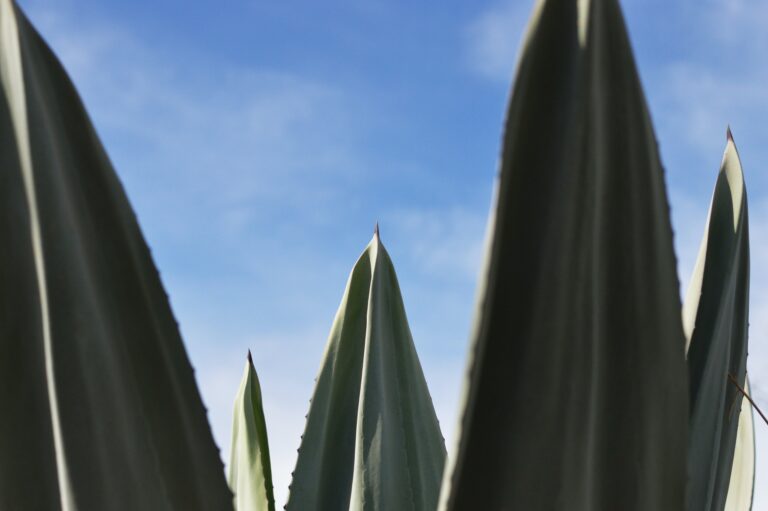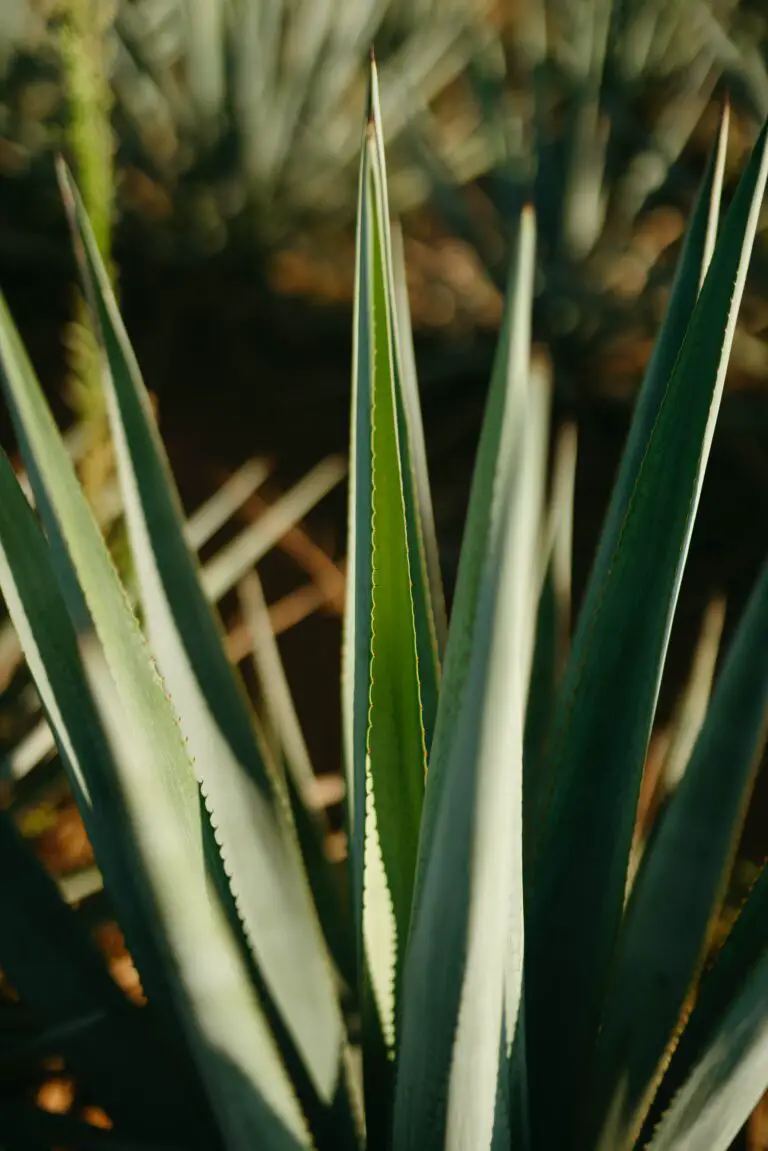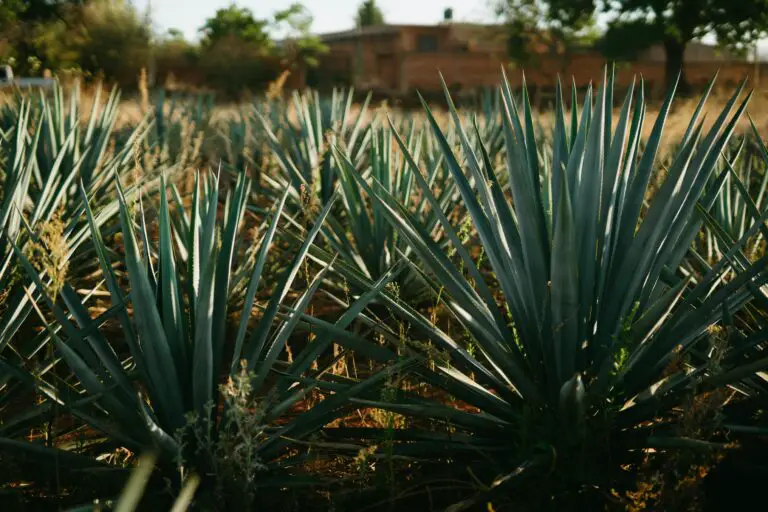Introduction to Agave Murpheyi
Allow me to introduce you to a natural wonder that you may not have heard of – the Agave murpheyi! Nestled in the desert landscapes, this plant is not just a survivor but a real champion thriving amidst harsh conditions. This mesmerizing species, also known by its botanical name Agave murpheyi, stands proudly as a beacon of resilience and adaptability in the face of adversity.
At a first glance, you might be captivated by its stunning appearance. And it’s more than just a pretty face, possessing fascinating features and traits that make it a gem in the botanical world.

The Agave murpheyi is an evergreen, perennial plant that sports an exquisite rosette of thick, fleshy leaves. Wait until this botanical marvel unfolds its inflorescence – a brilliant, towering stem of resplendent flowers that are so inviting to pollinators. It’s like a skyscraper in the plant world, reaching as tall as 15 to 20 feet when fully grown!
Additionally, what makes the Agave murpheyi truly captivating is its extraordinary ability to adapt and thrive in the harshest of circumstances. Think about it – while we find the desert conditions daunting, this sturdy plant calls it home. From sweltering heat to bitterly cold nights and scanty water supply, it continues to flourish. It’s almost as if it’s telling us – “when the going gets tough, the tough get going”.
The Botanical Nomenclature of Agave Murpheyi
The Agave murpheyi belongs to the Agavaceae family. Agave, the genus name, is derived from the Greek word ‘agauos’ which means ‘noble’ or ‘admirable’ – quite fitting for this dignified desert dweller, isn’t it? Murpheyi, the species name, is an ode to John H. Murphey, a businessman and developer from Tucson, who in the 20th century, preserved many variants of this plant. Each attribute of its name connects the dots to detail its rich background, making it much more than just a scientific label.
So there you have it – a grand introduction to the resilient and fascinating Agave murpheyi. As we journey further, we will uncover even more about this desert spectacle!
Native Region and Adaptation
Agave murpheyi isn’t just your ordinary plant. Oh no, this fascinating flora epitomizes the paradoxical charm of the desert landscape from where it heralds—the Southwestern United States and northern Mexico. Picture the arid, sun-drenched expanses of the Sonoran Desert. Could anything possibly thrive and bloom in such challenging topography? Let’s immerse ourselves in understanding the terrestrial paradox of this fascinating plant’s adaptation to its native region.
Decoding the Natural Habitat of Agave Murpheyi
Standing stalwart amidst the rugged desert landscape, the Agave murpheyi exhibits a striking survivor instinct. It’s pretty scientific if you delve deeper. You see, these plants have built a robust defense against the grueling desert heat. Their thick, fleshy leaves retain water, while the waxy coat reflects sunlight and reduced water loss. They’re the undisputed survival pros of the Sonoran Desert, carving a niche on rocky slopes, dry soils, and hilltops with minimum moisture.
A cool fact about Agave murpheyi? Well, They’re commonly called ‘Century plants’—though that’s a misnomer. Contrary to popular belief, they don’t take a century to bloom. In fact, they bloom only once in their lifetime of about 15-30 years, producing a towering stalk of bright yellow flowers, an enchanting spectacle that’s worth the wait! But, post-flowering, the rosette dies, leaving behind young offsets—nature’s profound cycle of birth and rebirth. Fascinating, right?
Thriving in a Harsh Native Environment
Agave murpheyi is a marvelous testament to nature’s knack for adaptation. How this splendid plant vigorates in its native habitat while facing extreme drought and scorching temperatures is something remarkable. Evolution played its part well here, equipping Agave murpheyi with an effective system to store water in their broad leaves. Additionally, these leaves have a powdery coating to deflect UV rays and reduce water loss. So, while we humans struggle to apply our SPF 50 sunscreen correctly, these guys have had their sun protection game strong for millions of years!
To sum up, the resilience and adaptation of the Agave murpheyi is a remarkable botanical saga. Not only have they stood the test of time in their native regions, but they have also held immense cultural significance to indigenous communities, serving as a source of food, fibers, and even a symbol of divinity. Surely, the Agave murpheyi’s story is an inspiration for many of us as we navigate our own challenges.
Distinctive Features of Agave murpheyi
You think you’ve seen them all – the cacti, the yuccas and the countless desert bloomers, but then you stumble upon the Agave murpheyi, or as the locals call it, ‘the enchantress of the desert’. This beauty, boasting of a truly unique personality, is a sight to behold and a touch of a paradox. Let’s dive deeper into her world.
Hero in the Barren Wastes
Guess what’s rising gallant amidst arid landscapes where survival itself is an everyday combat? Yes, it’s the Agave murpheyi. Don’t be fooled by its quadratic rosette form and sharp-tip leaves. This plant, despite appearing brutal, serves as a lifeline for the desert ecosystem, a hero in its own sense.
Semelparity: The One-Shot Wonder
But what really makes this plant a standout? Here’s a clue: it’s all about the life cycle. Agave murpheyi practices ‘semelparity’, blooming gloriously once in its lifetime and then signing off with grace. Ever heard the phrase “some flowers are born to bloom only once”? It seems they were talking about our Agave!
A Thorny Affair
A closer inspection of the Agave tells a tale of a thorny affair. The leaves are stiff, endowed with formidable spine-like tips, and defend the plant against marauding herbivores. A natural defense mechanism perfected over millennia.
The Icing on the Agave: The Flower Stalk
Another fantastic feature of this desert gem? The towering flower stalk, which can reach up to 14 feet in height. And guess what? This becomes a mini-ecosystem itself, providing food and shelter for desert critters. The story doesn’t end here, though. The plant grand finale is a fireworks-like burst of yellow flowers! Truly a spectacle of nature.
Unveiling the Agave murpheyi distinctly underpins the undeniable fact that the desert, apparently silent and brooding, is teeming with life’s diverse expressions, with each entity, like our Agave, playing their unique part. So, the next time you venture into the arid unknown, do look out for the Agave – unmistakable, unforgettable, and truly emblematic of the paradox that a desert represents.
Growth Habits and Reproduction of Agave murpheyi
 If you imagine the arid deserts of Arizona and northern Sonora, Mexico, you might conjure images of sandy soil and stark open space. Yet, in these harsh conditions, you’ll find the formidable Agave murpheyi, a distinct species thriving against all apparent odds.
If you imagine the arid deserts of Arizona and northern Sonora, Mexico, you might conjure images of sandy soil and stark open space. Yet, in these harsh conditions, you’ll find the formidable Agave murpheyi, a distinct species thriving against all apparent odds.
But what makes Agave murpheyi so resilient? Let’s delve a little deeper to understand its unique growth habits and reproductive system.
Surviving the Tough Conditions
This succulent plant exhibits an incredible ability to adapt to its dry environment. Thanks to the unique formation of its leaves, Agave murpheyi has developed an efficient mechanism to preserve water. Its dagger-shaped leaves are not only picturesque but also function as an excellent defense system against herbivorous creatures. By ensuring its water supply is not wasted or threatened, this plant ensures its successful growth in the desert.
Remember, Agave murpheyi is not only battling against the desert’s extreme temperatures but also competing against other desert plants for very limited resources. So, how does it win this survival game? Believe it or not, the secret is in its roots! Unlike other plants that extend their roots deep down to draw water, Agave murpheyi spreads its roots wide and close to the surface to capture the smallest amount of rain, which is a more common occurrence than deep watering in desert conditions.
The Circle of Life: Reproduction of Agave murpheyi
Agave murpheyi, affectionately referred to as Hohokam agave, hardly rushes into reproduction. The majority of its life, which can extend up to 25 years, is spent growing and maturing until it’s ready for the grand finale.
This event, known as “semelparity”, occurs when the agave blooms a grand flower stalk that attracts pollinators. But this event comes at a cost: the plant finally draws from its stored resources in leaves and roots, causing the “parent” plant to die. Yet, in its death, it gives life. The dead plant makes way for “pups” or small plants, allowing a new generation of Agave murpheyi to dominate the desert once again.
For more in-depth information about this remarkable plant, you can refer to the Encyclopedia of Life.
Exploring the fascinating world of Agave murpheyi reminds us of the paradox of life that persists in harsh conditions, offering not just life-sustaining resources but also cultural symbols for the generations to thrive.
Agave murpheyi in Landscape Design
In the world of landscape design, some plants assert their presence more boldly than others. One stand-out is the Agave murpheyi. With its symmetrical rosette of leaves and its imposing silhouette, this plant makes a dramatic statement in any setting. But there’s more to Agave murpheyi than meets the eye. Let’s delve into how this remarkable plant is used in landscape design and uncover some examples of its application.
The Agave murpheyi, often referred to as the “Century Plant” or “Murphey’s Agave,” is native to the desert regions of the American Southwest and Mexico. Its hardy nature and striking aesthetic make it a popular choice for landscape designers looking to bring a touch of arid beauty to their creations.

A drought-tolerant plant, Agave murpheyi not only provides visual interest but also plays a key role in xeriscaping – a form of gardening that reduces the need for water. This makes it a savvy choice for designers working in areas affected by water restrictions or those aiming to create a low-maintenance garden.
Examples of Agave murpheyi in Landscape Design
Agave murpheyi has found its way into a range of landscape designs, from minimalist contemporary gardens to more traditional desert landscapes. Its sleek lines and structural form make it an excellent centerpiece plant, while its low water needs allow it to serve as a practical solution for regions with a dry climate.
In a contemporary landscape design, Agave murpheyi might be used in geometric planting designs to emphasize clean lines and simplicity. Its architectural form adds interest to the garden while keeping with the modern aesthetic.
Agave murpheyi can be equally at home in a naturalistic desert garden, along with other desert-adapted plants such as yucca, salvia, and desert marigold. These landscapes often aim to recreate the beauty of the desert environment and might be found in public spaces, as well as private residences.
So there you have it. If you’re looking to make a big statement with little water usage, the Agave murpheyi may well be the plant for your design.
The Cultural Significance and Uses of Agave Murpheyi
Unlocking the door to cultural heritage and traditional practices, the Agave murpheyi, speaks volumes about the intriguing and resourceful indigenous societies of its native region. Let’s delve into the cultural canvas of these societies, illustrating the centrality of this amazing plant.
The vibrant tribes of the Sonoran Desert region, including the Hohokam and the Tohono O’odham, have woven the Agave murpheyi into the fabric of their existence. This ‘desert paradox’, as it is often fondly known, was not just a plant to them. It was a lifeline, a resource, and a symbol of their persistence in a terrain that was often as harsh as it was beautiful.
Agave Murpheyi: A Utility Storehouse
From the spiky leaves to the towering flower spike, every part of the Agave murpheyi found a purpose. The sharp, rigid leaves were crafted into needles and scrapers, while the sturdy stalk served as a construction material for shelters in some communities. But it’s not just about survival- this spectacular plant was equally critical in the day-to-day activities, and even the festivities of these indigenous societies.
A Taste of Tradition: The Culinary Uses of Agave Murpheyi
Thinking about the culinary realm, Agave murpheyi demonstrated the way to a rich, cultural gastronomy. Native tribes often harvested the plant’s heart, which was then roasted to yield a sweet, nutritious staple that was part of their traditional diet. Not just the fibrous pulp, even the plant’s sap was found boiling in their pots, used to produce sweet syrups or fermented to create a form of agave wine, offering a glimpse into their unique culinary practices.
Agave murpheyi stands as a testament to the ingenuity of the indigenous tribes and their unparalleled wisdom in utilizing nature’s assets. Wrapped in historical narrative and cultural tapestry, the plant continues to whisper tales of their survival, resilience, and identity, making it not just a ‘desert paradox’, but a cultural emblem too!
Plant Care and Maintenance
Folk wisdom has it that the desert thrives on neglect. This adage is particularly true when it comes to growing the resilient Agave murpheyi, a plant that seems to revel in difficult conditions. Whether you’re considering growing this remarkable desert dweller in your garden or inside a container in your living room, you’re in good company. Let’s uncover the secrets to providing the best care to the Agave murpheyi.
Firstly, selecting the appropriate location is key. Agave murpheyi, like most desert plants, loves the sun. An area with plenty of sunlight will make this plant truly flourish. You might even say that the sunnier, the better!
When it comes to the soil, Agave murpheyi isn’t very picky. However, to optimize growth, it’s best to plant it in a sandy or rocky soil which drains well. A mainstay in desert gardens for this very reason, it’s fairly resistant to drought, making it an excellent choice for those who might occasionally forget to water their plants.
Planting and Growing Agave murpheyi
So, how exactly does one go about planting Agave murpheyi? When planting in the ground, ensure that the agave’s root base is level with the soil. If you’re potting the plant, ensure you have a container deep enough to accommodate the taproot system. Don’t forget, as with all succulents, a well-draining soil is a must. You can even create your own by mixing coarse sand, potting soil, and perlite in equal parts.
When it comes to watering, the common mantra “less is more” comes into play. In fact, it’s far more common to overwater an Agave murpheyi than underwater one. During summer months, watering once a week is sufficient, while in winter, you can cut back to once a month.
Maintenance Tips
Like an old friend, Agave murpheyi requires very little maintenance to stay satisfied. One of the benefits of this plant is its slow-growing nature, so frequent repotting is not necessary. Pruning, too, seldom needs to be done. However, if you do notice any dead or damaged
Threats and Conservation
Nestled inside the blistering terrain of desert lands, the resilient Agave murpheyi, fondly known as the ‘century plant,’ thrives indifferent to the outside world’s hardships. Its mesmerizing beauty bedazzles and is a token of life persisting amidst adversities.

However, the startling reality looming large is the potential threats that this verdant prophet of the desert faces. On a daily basis, Agave murpheyi battles not just harsh natural conditions but man-made problems as well. The onslaught of urban development and agriculture expansion, compounded by climate change, pose existential challenges to their survival.
The Unseen Enemy
Unregulated urban development has led to the fragmentation of the ecosystem, often isolating the Agave murpheyi from its natural pollinators like the long-nosed bats, leading to a drastic slump in reproduction.
Add to that, the ill effects of climate change. With longer droughts and soaring temperatures, young saplings are in peril even before they can fully mature. Not to mention the overharvesting of mature plants for their sap and fibres, often leaving the young ones to fend for themselves.
Conservation: A Beacon of Hope
While the challenges are formidable, concerted efforts are underway to protect this symbol of resilience. Protective legislation, eco-centric urban planning and public awareness campaigns serve as pillars in the conservation strategy.
It’s crucial to adopt strategies that aim at not just conservation but also sustainable use of the Agave murpheyi. Educational programmes that make people aware of the plant’s importance in the ecosystem can be transformative in bolstering conservation efforts.
In conclusion, the battle for the survival of the Agave murpheyi is a testament to nature’s unyielding spirit against adversities. It reinforces humanity’s responsibility towards the natural world and drives home the message that biodiversity is an intricate tapestry where every thread matters – and that includes the stunning Agave murpheyi. With relentless efforts and collective responsibility, there is indeed a beacon of hope for this desert paradox.
Frequently Asked Questions (FAQs)
One popular subject of interest and inquiry that has been making waves in the botanical world is none other than the Agave murpheyi. In this section, we will be answering some of the most frequently asked questions related to Agave murpheyi. So, grab a cup of tea, and let’s delve into the mysterious world of this unique desert dweller.
First things first, what exactly is Agave murpheyi? It’s not just your average desert plant—this mesmerizing succulent holds a world of enigmas beneath its spiky exterior. Epitomizing the harsh yet beautiful paradox of the desert ecosystem, the Agave murpheyi has evolved to adapt and thrive in its rugged environment. Let’s answer some more queries that you may have about this unique plant species.
Where can Agave murpheyi be found?
Native to central and southern Arizona, Agave murpheyi is a distinctive element of the Sonoran desert. However, it’s not confined to the parched deserts alone—you can witness its royal stance at altitudes much above the sea level, particularly on rocky outcrops. From the resilient persistence of this plant, there’s a lot we can learn about surviving and thriving amid adversities.
How does Agave murpheyi contribute to its ecosystem?
If you thought Agave murpheyi is merely a decorative presence in the desert, you’re mistaken. Just like every thread in a tapestry contributes to the overall picture, Agave murpheyi plays an integral role in its ecosystem. Its deep roots reduce soil erosion and its nectar-rich flowers attract a variety of pollinators, promoting biodiversity. It’s like a silent guardian, quietly sustaining life in its harsh home.
Why is Agave murpheyi culturally significant?
The cultural significance of Agave murpheyi transcends its botanical importance. Traditionally, it has been pivotal in the lives of Native Americans who utilized it in numerous ways—from using its fibers for rope to harnessing its sap for creating sweet syrup and strong fermentable beverages. Its iconic silhouette now brings a unique charm to southwestern landscapes and has become a symbol of the region’s cultural heritage.


